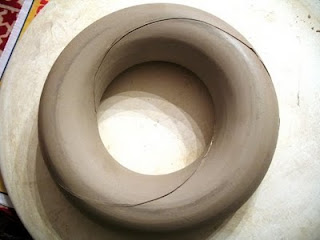Tidbit 1
The writing workshops have made me refreshingly more attuned to things like this Tom's of Maine toothpaste tube:

In case you can't read the blurry photo, the text says (in part):
"Embrace the Power of Mother Nature! At Tom's of Maine that means we use authentic and effective natural ingredients.[1] We use zinc citrate sourced from zinc--a naturally occurring mineral and xylitol, a natural ingredient derived from birch bark or corn.[2]"
[1] Did you catch the missing comma after the introductory element? Tolkien left those commas out all the time, which I'm told is common in British English. Since Tom's of Maine is located in Maine, U.S.A., I hold the company to American English standards for comma usage. Aside from that, can anyone tell me what an "inauthentic" ingredient would be?
[2] I think they meant "We use zinc citrate (synthesized from naturally-occurring zinc ore) and xylitol (a natural ingredient derived from birch bark or corn)," but hey, I'm not a chemist. By the way, isn't saying "we use zinc citrate sourced from naturally-occurring zinc" kind of like saying "we use water sourced from naturally-occurring hydrogen and oxygen"?
Tidbit 2
While driving home the other day, I happened to observe that if the sum of the digits in a number is a multiple of 9, the number itself is evenly divisible by 9 (an extension of the similar tidbit about numbers being divisible by 3 if the sum of their digits is divisible by 3). This is old news to mathematicians, but brand new news to me. I don't know about you, but I feel empowered knowing, without doing any long division, that one trillion four billion seven hundred thousand five hundred one is divisible by 9.
My mathematician dad would want me to understand why this works, as opposed to simply knowing it works. I never appreciated that attitude when I was a kid bumming help from him on my math homework--in fact, I distinctly resented it--but I appreciate it now. So here you go, dad:
One trillion four billion seven hundred thousand five hundred one
= 1,004,700,501
= 1*(1+999,999,999) + 4*(1+999,999) + 7*(1+99,999) + 5*(1+99) + 1
= 1 + 4 + 7 + 5 + 1 + (a bunch of numbers divisible by 9).
Thus, if 1 + 4 + 7 + 5 + 1 is divisible by 9 (it is) then 1,004,700,501 is too.
In case you're wondering, I was thinking about nines because I've been doing a lot of Ken-Ken recently, a habit that started as a way to procrastinate finishing the Lord of the Rings trilogy (which, incidentally, I finished on Dec. 31, 2010).







